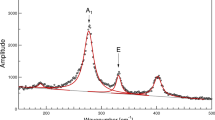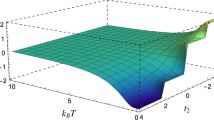Abstract
IN dealing with crystals of low symmetry, a model showing the orientation of the indicatrix axes with respect to the external form helps greatly in visualizing the optical characters which will be presented by sections parallel to different faces. I have found the model described below extremely useful for this purpose, both in the study of new material and as an aid to the appreciation of published optical data. It is readily constructed from simple materials and can be adjusted to represent the optic orientation in any biaxial crystal to a degree of approximation which depends mainly on the data available.
This is a preview of subscription content, access via your institution
Access options
Subscribe to this journal
Receive 51 print issues and online access
$199.00 per year
only $3.90 per issue
Buy this article
- Purchase on Springer Link
- Instant access to full article PDF
Prices may be subject to local taxes which are calculated during checkout
Similar content being viewed by others
Author information
Authors and Affiliations
Rights and permissions
About this article
Cite this article
HARTSHORNE, N. A Simple Universal Model for Representing the Optic Orientation of Biaxial Crystals. Nature 161, 94–95 (1948). https://doi.org/10.1038/161094a0
Issue Date:
DOI: https://doi.org/10.1038/161094a0
Comments
By submitting a comment you agree to abide by our Terms and Community Guidelines. If you find something abusive or that does not comply with our terms or guidelines please flag it as inappropriate.



